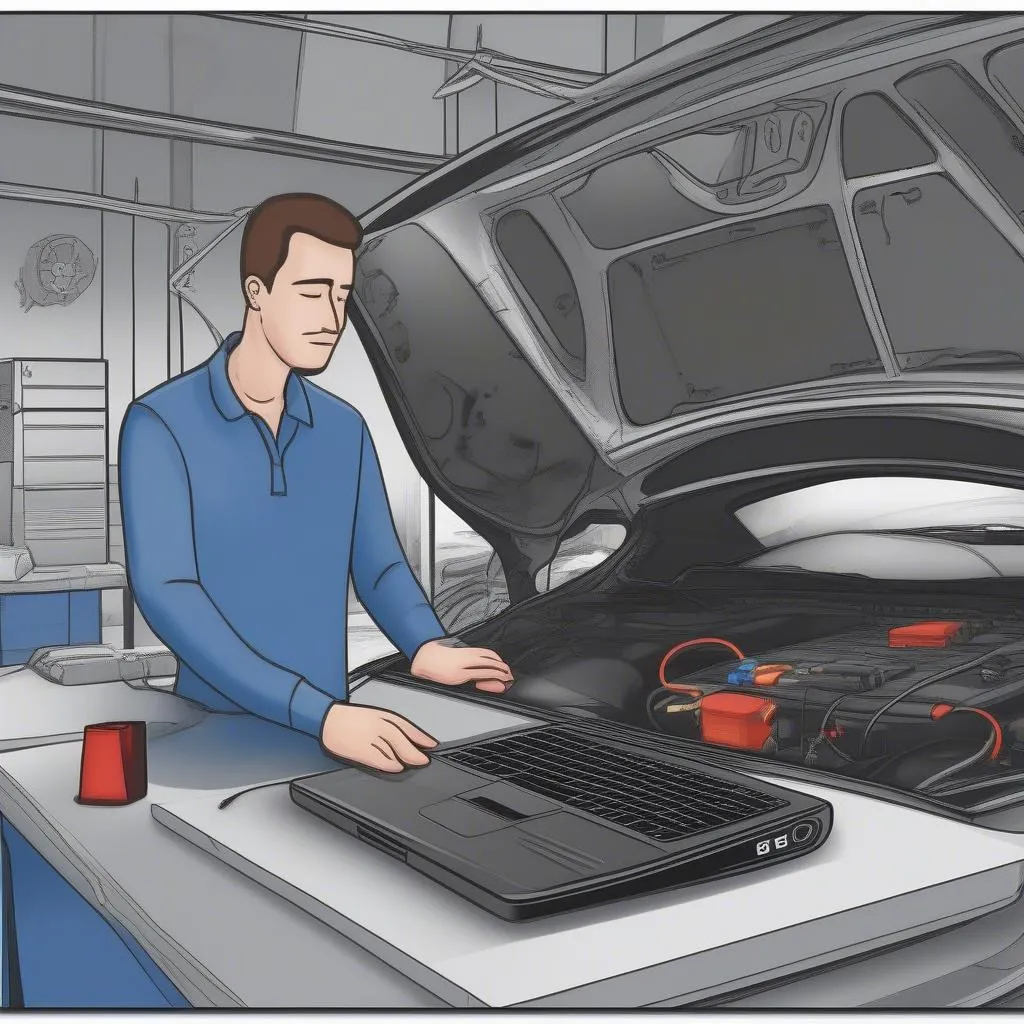When diving into the world of car diagnostics and customization, you’ll often come across the term “security access” within the VCDS software. But what does it actually mean? In simple terms, it’s like a secure doorway within your car’s control modules, preventing unauthorized changes to critical systems. This article delves into the intricacies of VCDS security access, its importance, and how it’s used in automotive diagnostics and programming.
What is VCDS Security Access and Why is it Needed?
Imagine you could access and modify any setting within your car’s computer system – from airbag deployment thresholds to engine timing. While this sounds exciting for advanced users, it also presents a significant risk. Without security measures, unqualified individuals could unintentionally cause damage or create hazardous situations.
This is where VCDS security access comes in. It acts as a safeguard, requiring a specific code before allowing access to sensitive control modules. This ensures that only those with the necessary knowledge and authorization can make changes.
 Car Control Module Circuit Board
Car Control Module Circuit Board
How Does Security Access Work in VCDS?
When you connect your VCDS interface to your car and attempt to access certain modules, you might be prompted for a security access code. This code is typically a 4-digit number, unique to the specific module and sometimes even the vehicle itself.
Where do you find these codes? That’s the tricky part. They are not readily available in your owner’s manual. Dealerships have access to these codes, and there are online resources and databases that specialize in providing them – often for a fee.
A word of caution: Be extremely careful when obtaining security access codes from unofficial sources. Using incorrect codes can potentially lock you out of modules, requiring professional intervention.
Common Uses of Security Access in VCDS
Here are a few scenarios where you might encounter security access prompts:
- Adaptation: This involves fine-tuning module settings to adjust for wear and tear, component replacement, or customization. For example, you might need security access to adapt a new throttle body or adjust the sensitivity of your rain sensor.
- Coding: This refers to activating or deactivating specific features within a module. For instance, you might use coding to enable daytime running lights, change the behavior of your automatic locks, or adjust the sensitivity of your parking sensors.
- Troubleshooting: Sometimes, accessing diagnostic trouble codes (DTCs) or performing advanced troubleshooting within a module requires security access.
 Mechanic Using VCDS Diagnostic Tool
Mechanic Using VCDS Diagnostic Tool
Security Access: A Double-Edged Sword
While crucial for safety and security, VCDS security access can be a hurdle for some users:
Positive Considerations:
- Prevents accidental damage: Security access safeguards your vehicle’s electronics from unintentional harm.
- Ensures qualified access: It helps maintain the integrity of your vehicle’s systems by limiting access to trained individuals.
Potential Challenges:
- Code acquisition: Finding the correct security access codes can be challenging and sometimes costly.
- Risk of module lockout: Using incorrect codes can lead to module malfunctions or even complete lockout.
FAQs about VCDS Security Access
Q: Can I bypass VCDS security access?
A: While there might be workarounds floating around online, it’s highly discouraged. Bypassing security measures can void warranties, damage your car’s electronics, and even compromise safety features.
Q: I lost my security access code. What do I do?
A: Contact an authorized dealer or a reputable VCDS support forum. Be prepared to provide proof of vehicle ownership.
Q: I entered an incorrect code multiple times. Is my module locked?
A: Possibly. Some modules have lockout mechanisms after multiple incorrect attempts. Consult a professional if you suspect a lockout.
